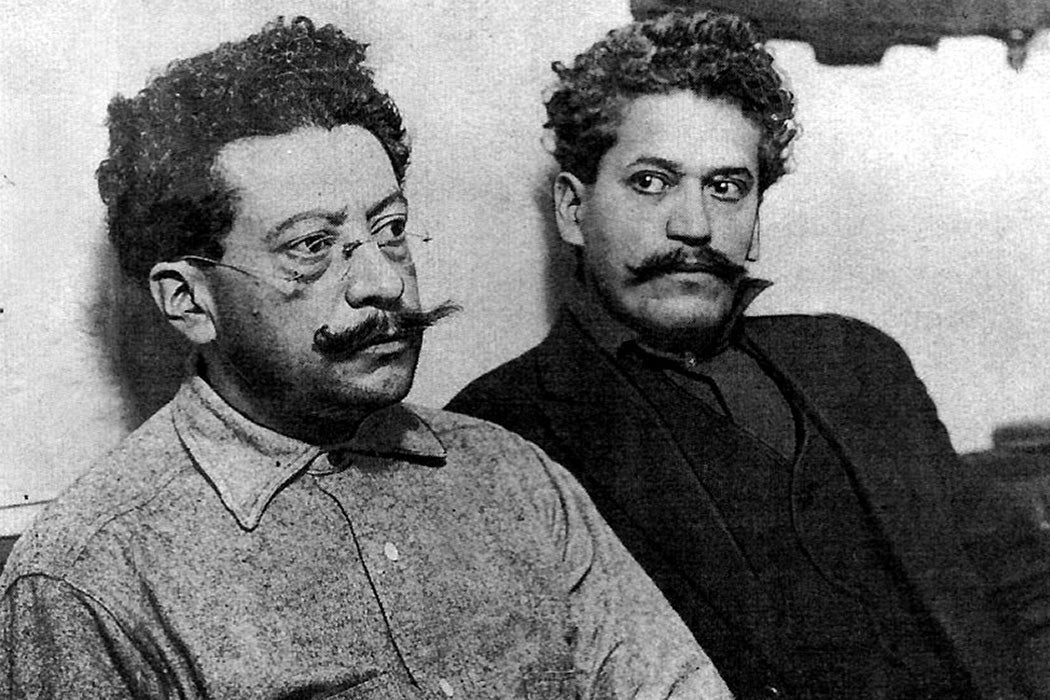Mexican brothers Ricardo and Enrique Flores Magón were in exile in the United States in the first decades of the twentieth century. Anarchists, they were founders of the Junta Organizadora del Partido Liberal Mexicano (PLM), dedicated to bringing down dictator Pofirio Diaz. As such, they and their magonistas (followers) were chased across the US by Mexican diplomats, private detectives, local sheriffs, and two of the very first agents of the Department of Justice’s Bureau of Investigation, later the Federal Bureau of Investigation.
“In Mexican national history, the Flores Magón brothers are precursors,” explains scholar Nicole M. Guidotti-Hernández in her exploration of the lesser-known Enrique Flores Magón’s family life, “that is, they are the intellectuals who fomented what would eventually become a full-blown revolution in 1910.”
They are, in essence, founding fathers. But Guidotti-Hernández is more concerned with the history of a founding mother, Paula Carmona, Enrique Flores Magón’s first partner. For Paula Carmona was erased from Enrique’s life, the magonista movement, and revolutionary history.
“Enrique Flores Magón blurred the historical facts to create a more palatable history worthy of enshrinement as a revolutionary precursor,” writes Guidotti-Hernández. In his version, his wife was Teresa Arteaga, whom he claimed to have married in 1905, which was years before he seemed to have even met her. It wasn’t just him; the PLM junta excommunicated Paula Carmona, and then this intimate family history was repressed, forgotten, or ignored.
The problem was Paula’s father. Rómulo Carmona was originally a big supporter of the magonista movement. In his Los Angeles bookstore, he helped fund and distribute the movement’s newspaper Regeneración. His sixteen-year-old daughter became thirty-one-year-old Enrique’s compañera or companion in 1909.
“As far as the records indicate, they were not legally married but referred to themselves as being married, which goes somewhat against anarchist principles of free love,” writes Guidotti-Hernández. Paula Carmona was one of the several women who contributed to Regeneración, illustrating “the early twentieth century concept of women’s rights as channeled through the traditions of political motherhood and family building.” For instance, Paula wrote in 1910, “Comradas, Mexican Mothers: push your husbands into the fight.”
She and Enrique had three children between 1910 and 1912; their third was born a day after Enrique was sent to federal prison for violating US neutrality laws.
While both Magón brothers were in prison in 1913, Rómulo Carmona and another anarchist attempted to take control of Regeneración and do a behind-the-scenes land deal for their own profit.
The act, unsurprisingly, was taken as betrayal of the magonistas. Paula seems to have not been involved in the plot, but her “association with her father” was taken to mean she was obeying her father’s authority rather than her imprisoned husband’s. Small political sects, especially under the weight of repressive measures, tend to eat their own over issues of trustworthiness and authenticity. Add misogyny to the paranoia, and the denunciations of Paula were virulent from all corners of the magonista universe.
Paula and Enrique’s never-legalized marriage was dissolved by telegram from prison in June 1913. When Enrique was released in early 1914, he denounced her again. By that time, Teresa Arteaga was calling herself Teresa Magón. Teresa’s existing children took the Magón name—and Teresa became “the originary [sic] mother of revolution,” enshrined in history.
Guidotti-Hernández notes that she’s the first person to write about Paula Carmona in detail. That includes Paula’s post-Enrique life. In 1914, she married—on a boat off the coast of California, since such marriages violated the state’s anti-miscegenation laws—a Japanese man, who was interned along with some of their children during WWII.
Weekly Newsletter
“To have a history of women, family, and nation, the lies that sustain [patriarchy] must be revealed,” Guidotti-Hernández concludes.
To read more on story of the chase of the Flores Magón through the loose border between Mexican and American histories, check out Kelly Lytle Hernández’s recent book, Bad Mexicans: Race, Empire, & Revolution in the Borderlands.







